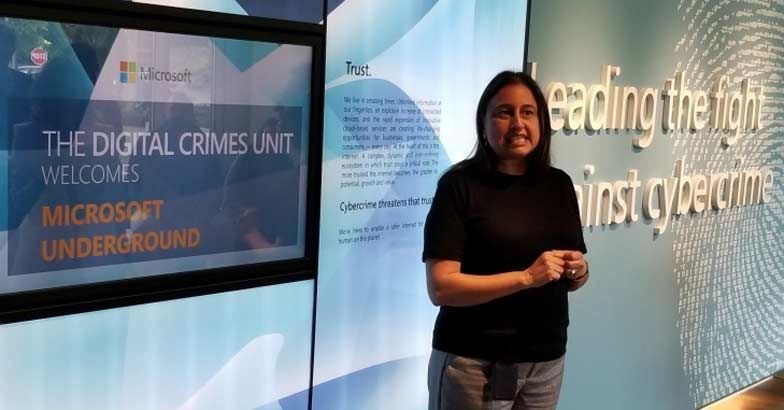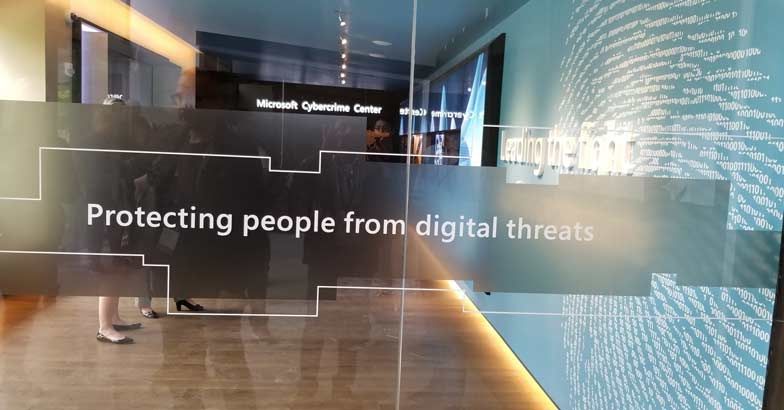New Delhi: As cybercrime becomes the new battlefield, Microsoft at its headquarters in Redmond, Washington, is working round-the-clock to intercept, analyse and mitigate threats - creating a road-map for various industry stakeholders to plan relevant actions.
The Global Cybercrime Centre is witnessing in real-time at least one billion end-point devices being infected from over three million unique IP addresses worldwide - from Seattle to New Delhi.
The 100-member strong Digital Crimes Unit (DCU) at the centre is using Next-Gen technology - Cloud, Big Data, Machine Learning (ML) and Business Intelligence (BI) - to improve the security of its products and services, protect vulnerable populations, fight malware and reduce digital risks.
According to Shilpa Bratt, director (shared services) of Digital Crimes Unit, a team of 3,500 professionals is looking at security, built into Microsoft products and services, using frameworks such as the security development lifecycle and operational security assurance.
 Shilpa Bratt, director (Shared Services) of Digital Crimes Unit, Global Cybercrime Centre, Microsoft.
Shilpa Bratt, director (Shared Services) of Digital Crimes Unit, Global Cybercrime Centre, Microsoft."We see cyber threats coming in real time. We can look at top threats and the most infected countries. This is like reverse Olympics where you don't want to be on the top," Bratt told a select media delegation visiting the campus earlier this month.
Nearly 30 people sit at the DCU and the rest in around 30 offices globally, including in India. Microsoft has set up a Cybersecurity Engagement Centre in New Delhi to empower organisations with information and techniques to secure critical information infrastructure and help reduce malware and digital risk.
The biggest threat, according to the Indian-origin Microsoft executive, is inside the Dark Web - part of the World Wide Web (www) that requires special software to access websites and other services.
"Based on the research we've done, we've identified 20 markets in Dark Web that are selling over 12 million corporate credentials.
"Who is behind the crime? You've probably heard of the basement hacker or the hobbyist hacker but it has evolved over the years and has now switched to organised crime syndicates and nation-state attacks, that are out for financial and political gains," she emphasised.
According to her, $8 trillion will be the estimated cost of cybercrime to the global economy by 2022.
Today, about 90 per cent of successful cyber attacks start with a phishing email.
"And who are the victims? The victims are all of us - individuals, businesses, governments and our families at the end of the day," she added.
The DCU has people from various walks of life - investigators, attorneys, analysts, engineers and business professionals.
"We come from all walks of life but we are very passionate. We have this common thread that runs through us - to protect customers, enforcement action against cybercriminals and bring those to justice," Bratt noted.
The DCU is housed in one of the 122 buildings at the sprawling Microsoft campus - in the close vicinity of the company's legal department or CELA (Corporate External and Legal Affairs).
Cybercrime is constantly evolving and entering new areas like tech support fraud and online child exploitation, among others.
Back in 2009, Microsoft partnered with New Hampshire-based Dartmouth College to develop a technology called "PhotoDNA" that creates a hash to uniquely identify an image, and store that hash at the back-end to match similar images online to prevent child pornography.
Today, over 130 organisations including Facebook and Twitter, are using "PhotoDNA". The Indian government recently announced to collaborate with the National Centre for Missing and Exploited Children (NCMEC) in the US to curb the circulation of rape videos and child porn.
"We offer 'PhotoDNA' for free to any company who can legitimately use it. It is a very robust technology. The amount of false positives is very minuscule. Because it has existed for some time and we've iterated on the technology, it is becoming better and better," Bratt informed.
To bolster its efforts, Microsoft has also collaborated with various stakeholders like law enforcement agencies, cyber security vendors, customers, NGOs and academia.
"The team that sits in this lab is our analytics and innovation team which is constantly looking for insights in the data that can help us drive progress when it comes to fighting cybercrime. When we find something that works, we create a proof of concept, pilot it, incubate it and operationalise that analytic," she informed.
"Innovation is very critical in this field. We are trying to stay one step ahead of cyber-criminals and what is working in our favour is amazing talent at Microsoft that specialise in ML and AI," Bratt said.

























 Microsoft Cybercrime Centre in Redmond, Washington.
Microsoft Cybercrime Centre in Redmond, Washington.